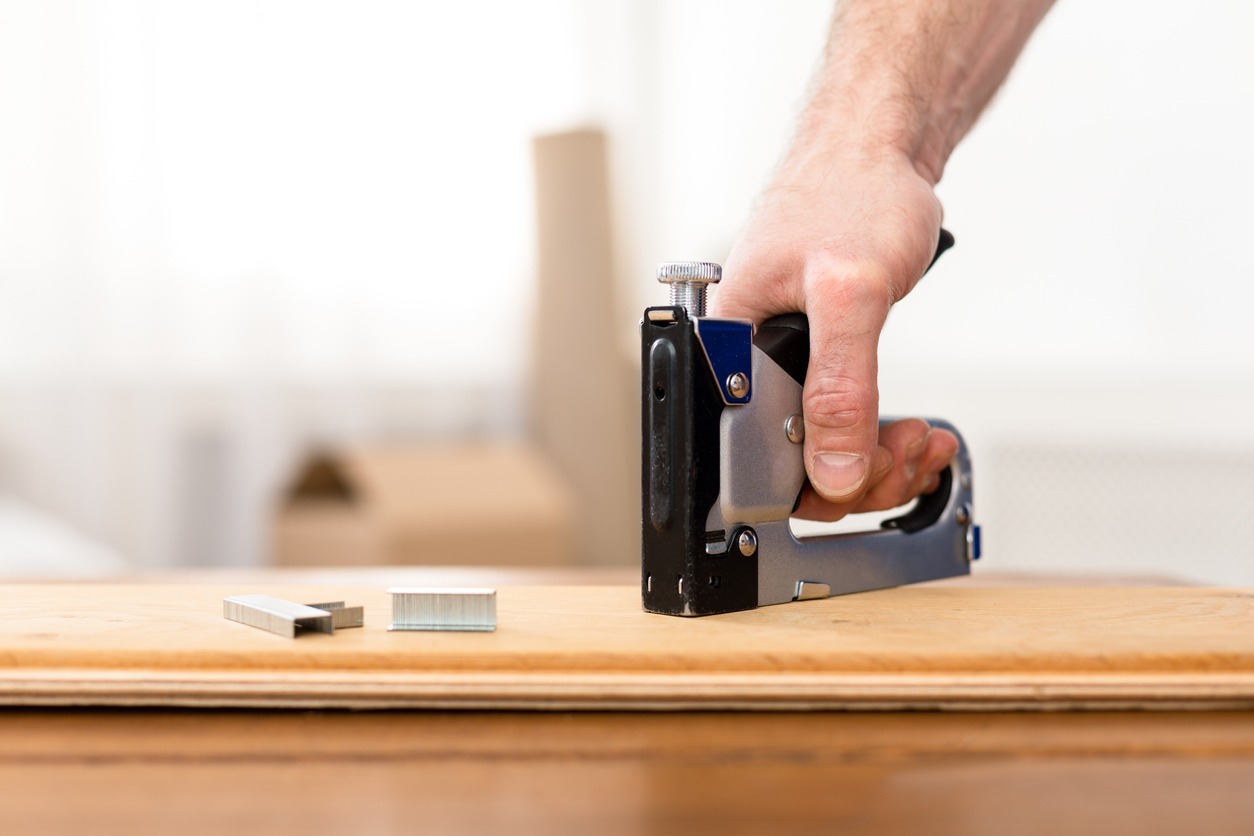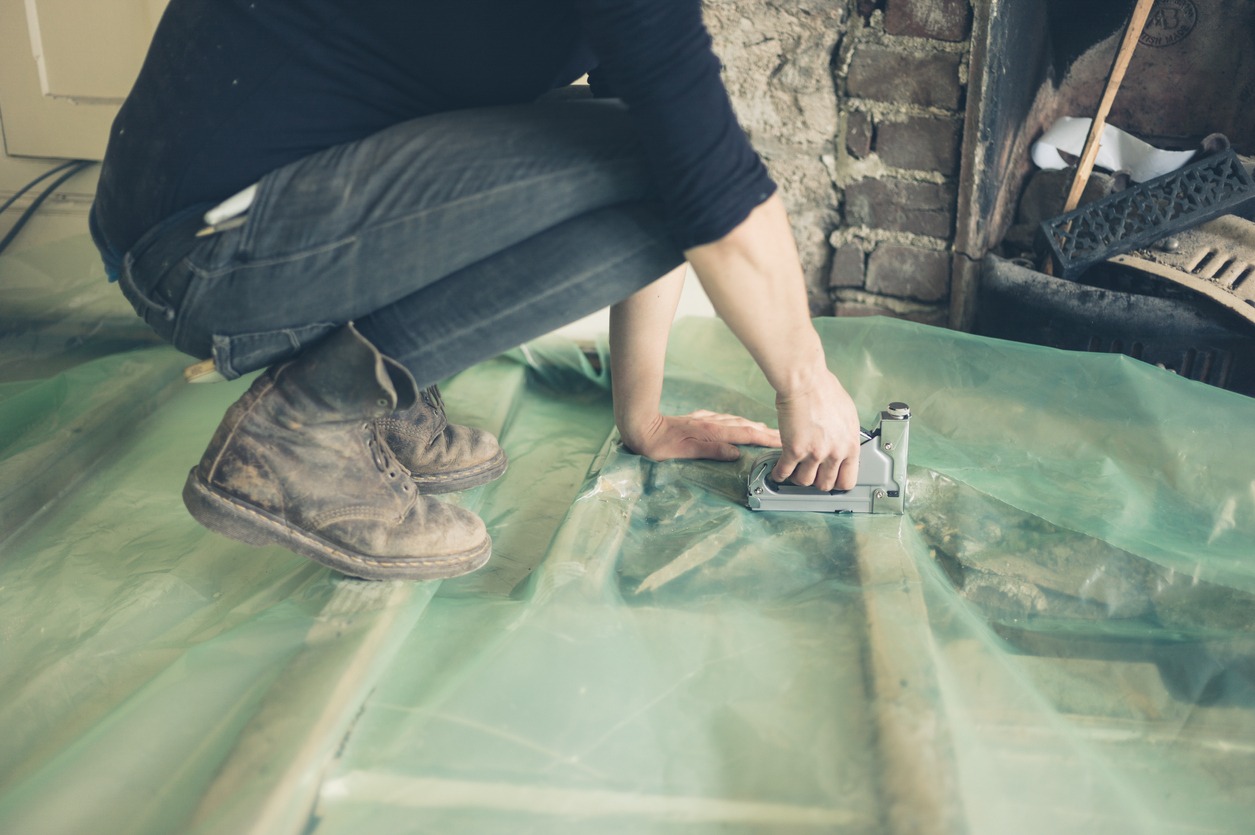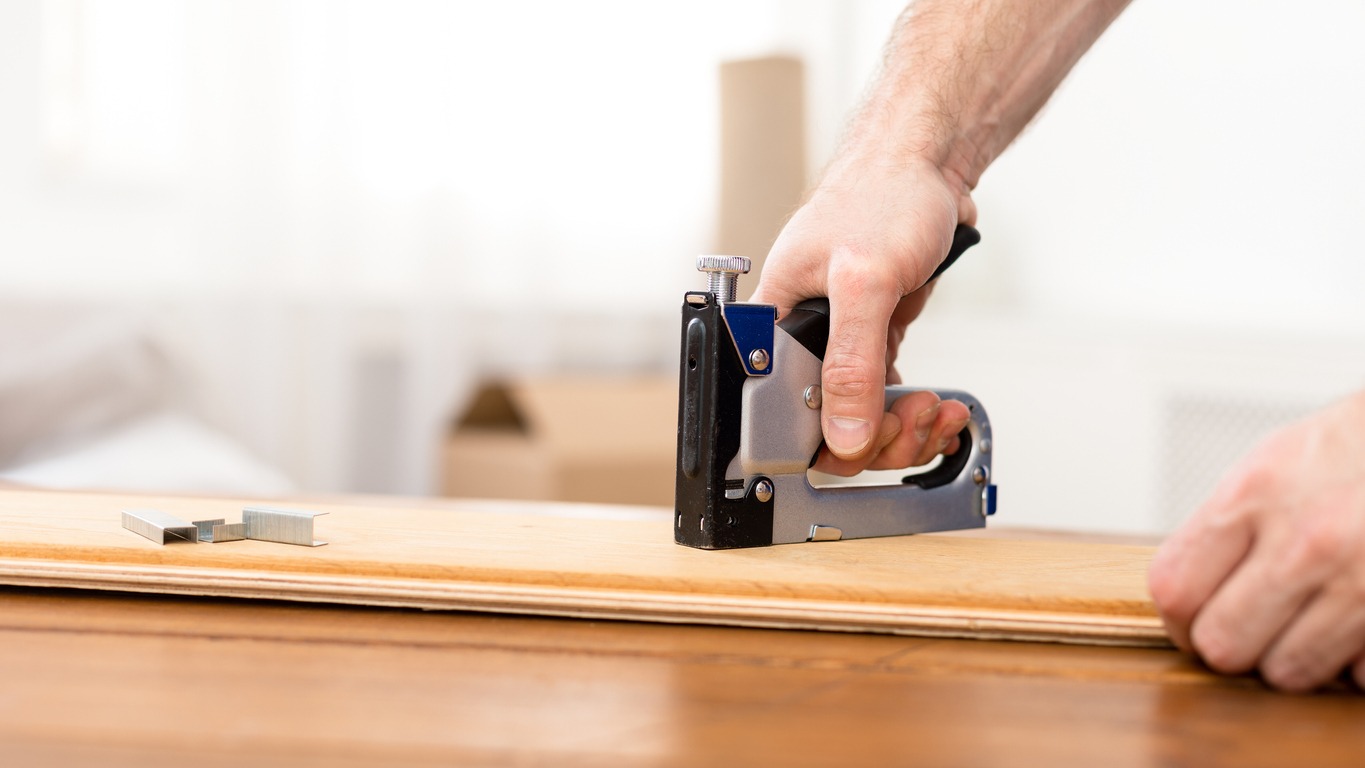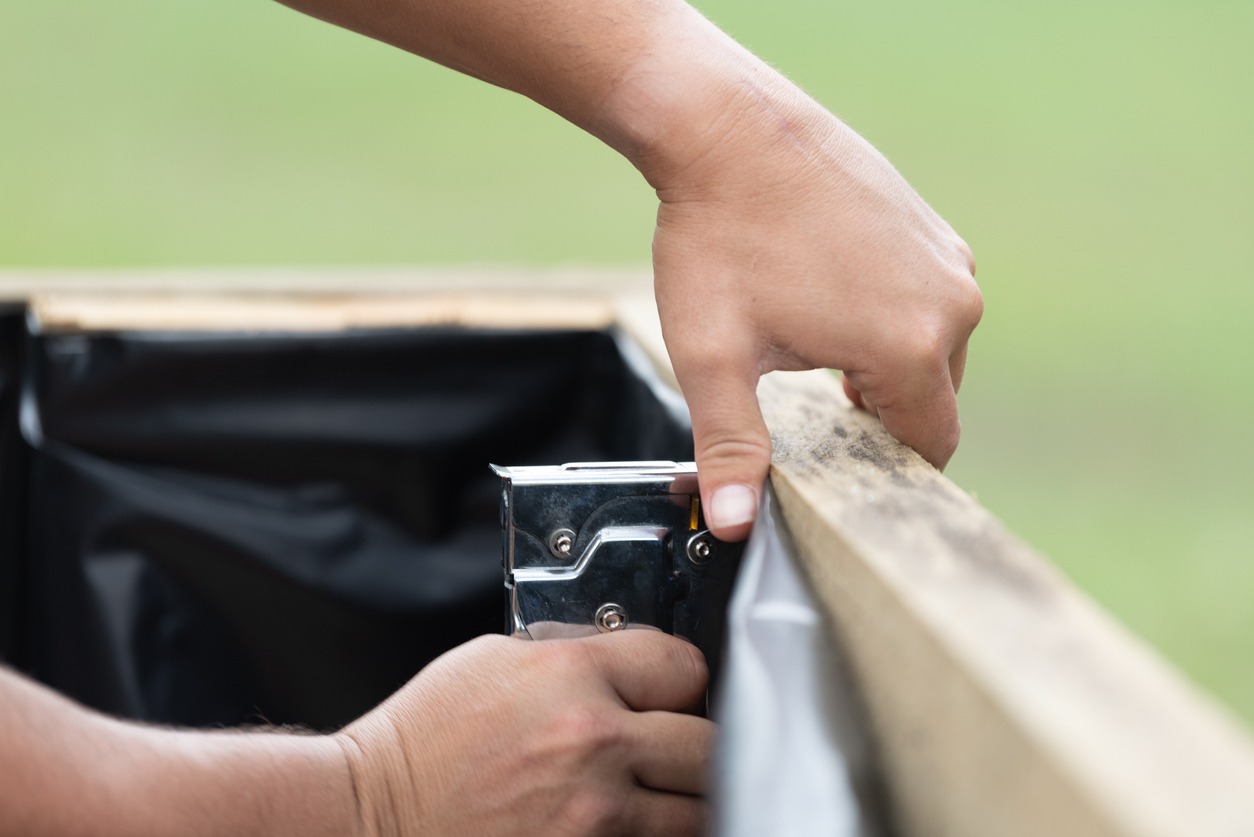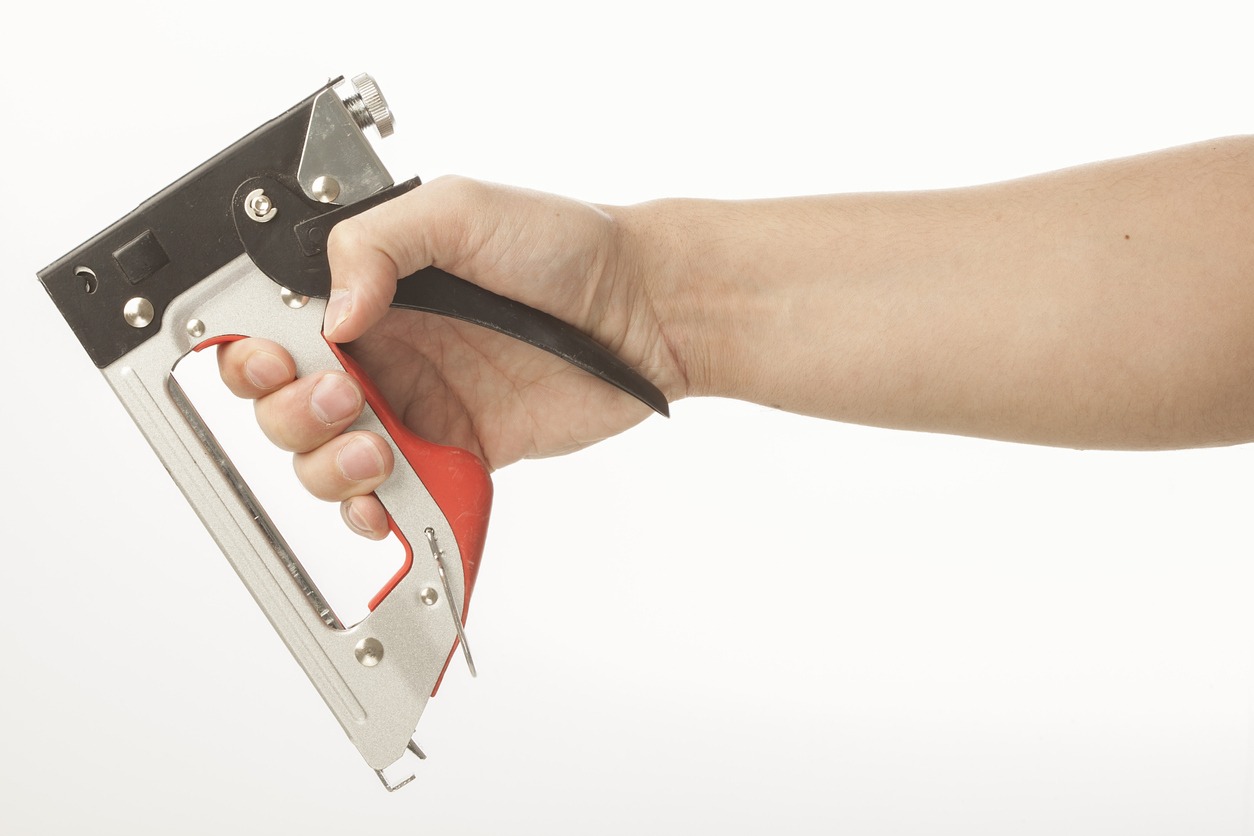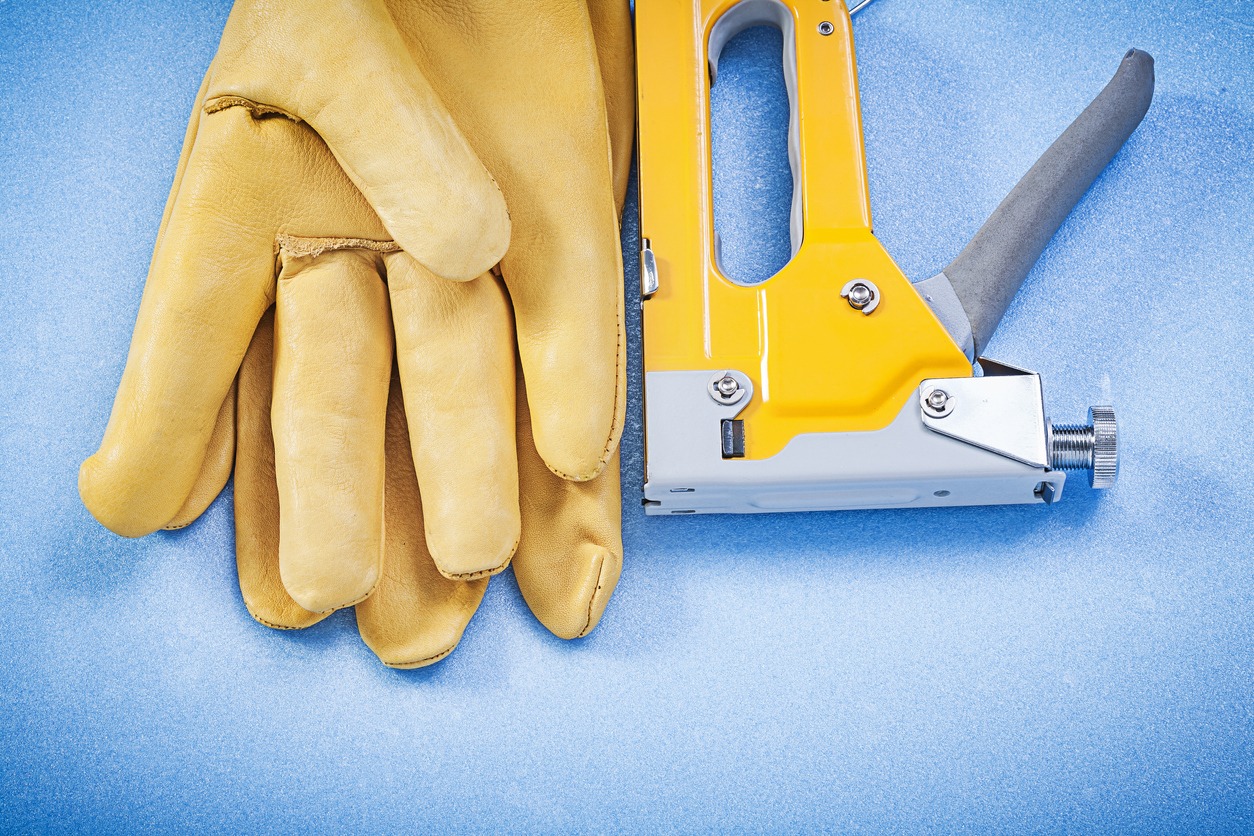A staple gun is a practical and adaptable tool that can be used for both professional and home tasks. It offers a fast and effective way to fasten materials, making it a necessary tool for homeowners, hobbyists, and craftspeople alike. They are designed to deliver different types and sizes of staples, depending on the requirements of the project and the materials being used.
Understanding the compatibility between staple gins and materials is important in order to achieve strong and secure connections. Aside from that, knowing which materials to avoid using with a staple gun can prevent damage to the materials and the tool, and ensure the safety of the user. That is why in this article, we are going to explore the types of materials that can be effectively used with a staple gun, along with some materials that should be avoided to ensure safe and successful stapling.
Common Uses of Staple Guns
Before we provide you with the types of materials you can use staple guns on, let us first learn about the common uses of staple guns. Staple guns are versatile tools that find extensive applications in different projects and industries. Since they can securely fasten materials together quickly, it makes them invaluable for numerous tasks. Below are the common uses of staple guns:
Upholstery and Furniture
Staple guns are commonly used to attach fabric, leather, or vinyl to furniture frames, cushions, and other upholstery projects. Staple guns with fine staples are preferred for upholstery as they can ensure a neat and discreet finish.
Carpentry and Woodworking
Staple guns are also used to join thin wood pieces, plywood, and other materials in woodworking projects, such as when making cabinets, frames, and trim work. The use of staple guns is a convenient way to fasten wood without the need to use screws or nails, which is great if you are trying to finish a project fast.
Home DIY Projects
Staple guns are also ideal for different DIY tasks, such as attaching fabric to walls, installing insulation, creating decorative wall hangings, or constructing simple furniture. You can use them to repair loose chair seats, hang posters or artwork, and secure wires or cables.
Construction and Insulation
Staple guns are used to secure insulation batts or roll to walls, ceilings, and floors during renovations or constructions. They help in attaching vapor barriers and house wrap to protect buildings from moisture.
Packaging and Shipping
In packaging and shipping industries, staple guns are used to securely seal cardboard boxes, particularly in heavy-duty applications. Staple guns can also be used to attach labels or tags to different products or packages.
Craft and Hobby Projects
Staple guns are also useful for securing paper, fabric, felt, and other crafting materials in artistic projects. Most crafters use staple guns to create event decorations, window displays and party backdrops.
Garden and Landscaping
Staple guns can also be used to hold down landscape fabric to prevent weed growth and soil erosion. They are also utilized to fasten materials when making garden frames, trellises, or fencing.
Types of Materials Compatible with Staple Guns
Staple guns are designed to work with different materials. However, its compatibility depends on the type of staple gun and staples used. Below are the common types of materials that are generally compatible with most staple guns in the market:
Fabric and Textiles
Staple guns are widely used in fabric and textile applications, making them a valuable tool for upholstery, sewing, and different crafting projects. Below are some examples of fabrics and textiles that are compatible with staple guns:
- Cotton and Canvas: Staple guns can easily attach to fabrics that are made of cotton and canvas. These materials are mostly used in upholstery projects, making seat covers, creating wall hangings, or other DIY home décor projects.
- Upholstery Fabric: This type of fabric is thicker and more durable compared to regular fabrics. In order to attach upholstery fabric to furniture frames, the use of fine wire staples is recommended. The staples need to be long enough to penetrate the fabric and securely anchor it to the frame.
- Linen: This is a natural fabric that has a unique texture. It is usually used in upholstery and home décor projects. Using staple guns with appropriate stables can securely attach linen to different surfaces.
- Polyester and Blended Fabrics: You can use staple guns on polyester and blended fabrics. This means that you can use them for a wide range of applications, such as crafting, sewing, and upholstery.
- Felt: This is a versatile fabric that can be used in craft projects, clothing accessories, and even for lining furniture. For felt, you can use shorter staples for them to attach well to different surfaces.
- Leather and Vinyl: Staple guns that are equipped with heavy-duty staples can effectively attach leather and vinyl materials. This is very useful in upholstery projects where leather or vinyl coverings are used.
- Non-Woven Fabrics: Staple guns can work well with non-woven fabrics, which are usually used in applications like disposable garments, filters, and bags.
Thin and Soft Materials
Staple guns are also suitable for working with thin and soft materials, providing a convenient and efficient way to fasten these materials together. Below are some examples of thin and soft materials that are compatible with staple guns:
- Paper and Cardboard: You can use a staple gun to fasten paper or cardboard together. This is commonly done in crafting, school projects, or small-scale packaging. For these materials, lightweight staple guns are ideally used to avoid damage.
- Foam and Insulation: Staple guns that have longer staples are well-suited for attaching foam padding and insulation materials during construction and upholstery projects. This includes foam boards, foam sheets, and insulation rolls.
- Rubber and Rubberized Materials: Some staple guns can effectively attach thin rubber sheets, making them suitable for certain DIY projects or small-scale repairs.
- Thin Plastic Sheeting: Lightweight staple guns can be used to fasten thin plastic sheets, such as polyethylene, in different applications, including temporary enclosures or moisture barriers.
- Paper-Based Laminates: Staple guns are compatible with paper-based laminates used in some crafts and DIY projects. They can be used to secure laminates to the surfaces without causing any damage.
Thin and Soft Woods
Staple guns are also capable of securely fastening thin and softwoods, making them useful in carpentry and woodworking. While they are not usually used for heavy-duty woodworking applications, they can be helpful when it comes to joining smaller wood pieces together or attaching thin wood to other surfaces. Below are some examples of thin and softwoods that are compatible with staple guns:
- Plywood: Staple guns are commonly used to fasten thin plywood sheets in various woodworking projects. Plywood is a versatile material used in construction, cabinetry, and crafting.
- Particleboard and MDF (Medium-Density Fiberboard): Staple guns can effectively attach particleboard and MDF, both of which are commonly used in furniture manufacturing and DIY projects.
- Softwood Trim and Molding: Staple guns can be used to attach softwood trim and molding to walls, ceilings, and other surfaces, providing a quick and efficient installation method.
- Thin Wooden Laminates: Staple guns are compatible with thin wooden laminates used in certain crafting and DIY projects.
- Wooden Dowels: In some woodworking applications, staple guns can be used to join wooden dowels together temporarily or for lightweight projects.
Thin Plastic and Vinyl
You can also use staple guns on thin plastic and vinyl materials, offering a convenient way to fasten and secure them. These materials are often used in different applications, including construction, packaging, and DIY projects. Below are a few examples of thin plastic and vinyl materials that are compatible with staple guns:
- Polyethylene Sheeting: Staple guns are commonly used to secure polyethylene sheets, which are often used in construction projects for moisture barriers, temporary enclosures, and protection from dust and debris.
- Vinyl Flooring: Staple guns with fine wire staples can be used to attach vinyl flooring to subfloors during installation, ensuring a secure and even application.
- Vinyl Siding: In certain cases, staple guns can be used to attach vinyl siding temporarily, especially for repair or adjustment purposes.
- Vinyl and Plastic Sheeting: Staple guns can be utilized to fasten thin vinyl or plastic sheets in DIY projects, such as creating protective covers or custom enclosures.
- Thin Plastic Packaging: Staple guns are compatible with thin plastic packaging materials, allowing for quick and efficient sealing of packages in various industries.
Mesh and Netting
Staple guns are also best used for working with mesh and netting materials, offering a secure and efficient method to fasten and attach these flexible materials. Mesh and netting are often used in different applications, such as gardening, construction, fencing, and crafting. Below are some examples of mesh and netting materials that are compatible with staple guns:
- Chicken Wire and Mesh Fencing: Staple guns are commonly used to attach chicken wire and mesh fencing to wooden frames or structures, providing a secure enclosure for gardens and livestock.
- Plastic Mesh and Netting: Staple guns can be used to fasten thin plastic mesh and netting materials, often used in gardening, landscaping, and DIY projects.
- Wire Mesh: Staple guns are compatible with wire mesh, which is used in fencing, reinforcement, and other construction and craft applications.
- Shade Cloth and Windbreak Netting: Staple guns can secure shade cloth and windbreak netting to frames or structures, providing shade and protection in outdoor settings.
- Tarpaulins and Tarps: In certain cases, staple guns can be used to fasten tarpaulins and tarps to frames or supports for temporary weather protection.
Household and DIY Materials
You can use staple guns with different household and DIY materials, making them useful for a wide range of projects. From simple home repairs to creative crafting endeavors, staple guns can provide a fast and efficient way to fasten materials securely. Below are some examples of household and DIY materials that are compatible with staple guns:
- Hanging Posters and Pictures: Staple guns can be used to hang posters, pictures, and lightweight decorations on walls. They offer a more secure hold compared to tape or adhesive hooks.
- Securing Wires and Cables: Staple guns are useful for securing wires and cables neatly along walls, baseboards, or furniture, helping to organize electrical setups and preventing tripping hazards.
- Fastening Insulation: Staple guns are commonly used to attach insulation batts or rolls to walls, ceilings, and floors during home insulation projects.
- Installing Carpet Underlay: Staple guns can fasten carpet underlay or padding to subfloors before installing carpets, providing a cushioned and comfortable flooring surface.
- Crafting and DIY Projects: Staple guns are indispensable for various crafting and DIY projects, such as creating homemade decorations, assembling small furniture, or building simple wooden structures.
- Repairing Loose Furniture: Staple guns can be used to repair loose chair seats, sagging fabric on furniture, or other minor furniture repairs.
- Creating Decorative Wall Hangings: Staple guns are useful for attaching fabric, canvas, or other decorative materials to wooden frames for wall hangings and artwork.
- Hanging Fabric Panels: In interior design, staple guns are used to attach fabric panels to wooden frames, creating stylish and versatile room dividers.
Materials to Avoid When Using Staple Guns
While staple guns are versatile and can be used with a lot of materials, there are certain materials that you need to avoid due to safety concerns, potential damage to the materials, or limitations of the staple gun itself. Below are some of the materials that are generally not recommended for use with staple guns:
Thick and Hard Materials
Staple guns are made for fastening lightweight and flexible materials. Therefore, you should not use them on thick and hard materials like metal, concrete, hardwoods, or thick plastic because the staples may not penetrate or hold securely, and using force may damage the staple gun.
Metal
Staple guns are not suitable for stapling metal materials, as they lack the power and construction needed to penetrate and secure metal surfaces. For more information on the use of staple gun on metal, check out our article, “Can a staple gun go through metal.”
Glass
Staple guns should not be used on glass or delicate materials, as the force of the staple could shatter or crack the glass.
Delicate and Fragile Items
Avoid using staple guns on delicate and fragile materials like fine china, ceramics, porcelain, or valuable artworks, as the pressure from the staples may cause damage.
Hardened or Treated Wood
Avoid using staple guns on wood that has been treated with certain chemicals or preservatives, as this could affect the staples’ integrity or cause corrosion.
Thick Vinyl or Hard Plastic
Staple guns may not be suitable for stapling thick vinyl or hard plastic materials, as they may require specialized equipment and higher-strength staples.
Electronic Devices
Never use a staple gun on electronic devices or electrical wiring, as it could cause damage, electrical hazards, or pose a safety risk.
Living Tissues or Human Skin
Never use a staple gun on living tissues or human skin. Staple guns are not medical devices and should not be used for any medical or surgical purposes.
Safety Precautions and Tips When Using Staple Guns
Staple guns are powerful tools that can cause injury or damage if not used properly. It is important to prioritize safety when using a staple gun to ensure a smooth and accident-free stapling experience. To further help you, below are some safety precautions and tips that you can follow when using a staple gun:
Wear Safety Gear
Always wear appropriate safety gear, including safety glasses or goggles, to protect your eyes from flying staples or debris. Additionally, consider wearing gloves to protect your hands from accidental staples.
Read the Manual
Familiarize yourself with the manufacturer’s instructions and safety guidelines provided in the staple gun’s manual. Each model may have specific recommendations and operating instructions.
Inspect the Staple Gun
Before use, inspect the staple gun for any damage or defects. Ensure that all components are in proper working condition and that the staple chamber is clear of obstructions.
Select the Right Staples
Choose the correct staple size, length, and gauge for the material you are working with. Using the wrong staples may result in inadequate fastening or damage to the material.
Test on a Scrap Piece
Always test the staple gun on a scrap piece of the material before working on the main project. This allows you to adjust the staple gun settings and ensure the staples hold securely.
Maintain Proper Grip
Hold the staple gun with a firm grip and position your hand away from the staple ejection point to avoid accidental discharge.
Avoid Pointing at Others
Never point the staple gun at yourself or others, even when it’s not loaded. Treat the tool as if it were always ready to fire.
Secure Workpiece
Ensure that the workpiece is stable and properly supported before stapling to prevent any unexpected movement.
Keep Fingers Clear
Keep your fingers clear of the staple ejection point while operating the staple gun.
Store Safely
Store the staple gun in a safe and secure place, away from the reach of children and unauthorized users.
Unplug or Disconnect Power
If the staple gun is electric or pneumatic, disconnect the power source before loading or unloading staples.
Clear Jams Safely
If a staple jam occurs, follow the manufacturer’s instructions for clearing the jam safely. Never use excessive force or attempt to clear jams with your fingers.
Avoid Contact with Live Wires
Never staple wires, cables, or electrical components, and always verify that there are no live wires in the stapling area.
Use in Well-Ventilated Areas
If using adhesive-backed staples or working with certain materials, ensure that you are in a well-ventilated area to avoid inhaling fumes or vapors.
Conclusion
Staple guns are indeed useful when it comes to different tasks and projects. They are efficient in fastening a wide range of materials, making them valuable assets in different industries and DIY projects. But it is important to be aware of the materials that you can use staple guns on and those that you need to avoid in order to prevent damage to the materials and the tool and ensure your safety while using it. We hope this article helped you learn more about the types of materials you can use staple guns on.
